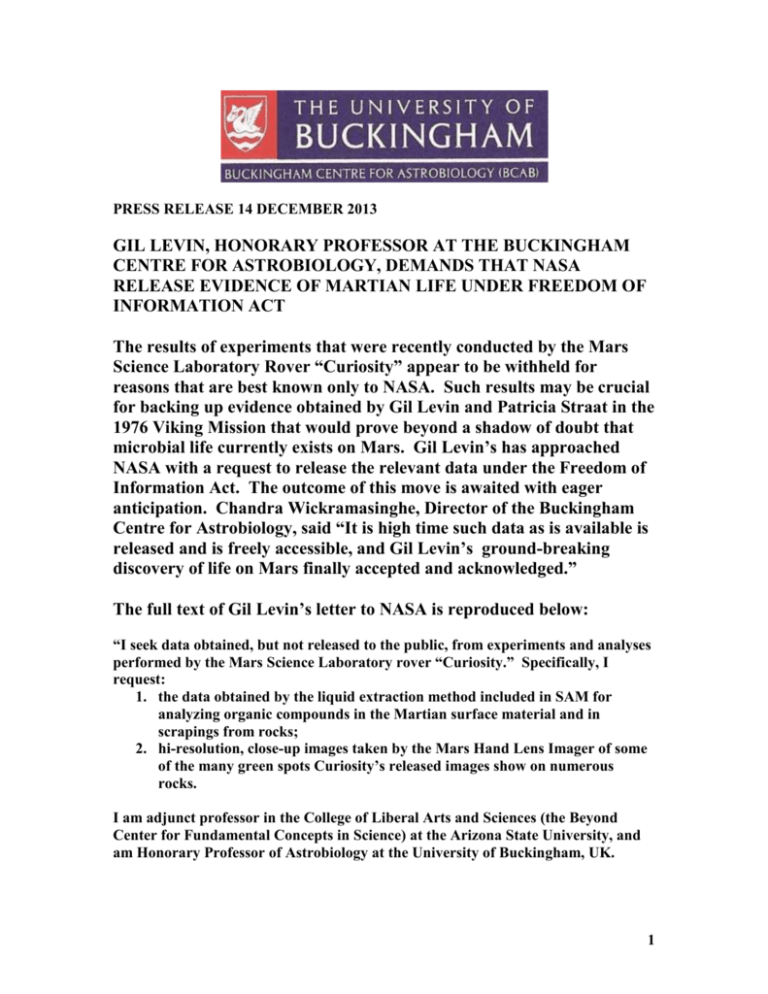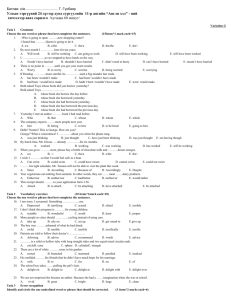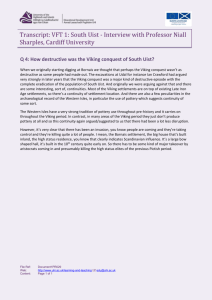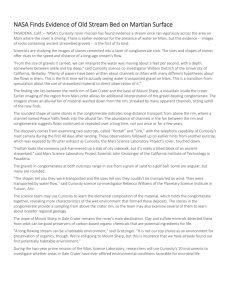docx
advertisement

PRESS RELEASE 14 DECEMBER 2013 GIL LEVIN, HONORARY PROFESSOR AT THE BUCKINGHAM CENTRE FOR ASTROBIOLOGY, DEMANDS THAT NASA RELEASE EVIDENCE OF MARTIAN LIFE UNDER FREEDOM OF INFORMATION ACT The results of experiments that were recently conducted by the Mars Science Laboratory Rover “Curiosity” appear to be withheld for reasons that are best known only to NASA. Such results may be crucial for backing up evidence obtained by Gil Levin and Patricia Straat in the 1976 Viking Mission that would prove beyond a shadow of doubt that microbial life currently exists on Mars. Gil Levin’s has approached NASA with a request to release the relevant data under the Freedom of Information Act. The outcome of this move is awaited with eager anticipation. Chandra Wickramasinghe, Director of the Buckingham Centre for Astrobiology, said “It is high time such data as is available is released and is freely accessible, and Gil Levin’s ground-breaking discovery of life on Mars finally accepted and acknowledged.” The full text of Gil Levin’s letter to NASA is reproduced below: “I seek data obtained, but not released to the public, from experiments and analyses performed by the Mars Science Laboratory rover “Curiosity.” Specifically, I request: 1. the data obtained by the liquid extraction method included in SAM for analyzing organic compounds in the Martian surface material and in scrapings from rocks; 2. hi-resolution, close-up images taken by the Mars Hand Lens Imager of some of the many green spots Curiosity’s released images show on numerous rocks. I am adjunct professor in the College of Liberal Arts and Sciences (the Beyond Center for Fundamental Concepts in Science) at the Arizona State University, and am Honorary Professor of Astrobiology at the University of Buckingham, UK. 1 I was Experimenter of the Viking Mission Labeled Release (LR) life detection experiment landed and successfully performed on Mars in 1976. I and my CoExperimenter, Dr. Patricia Ann Straat, along with many colleagues, have concluded that the LR detected living microorganisms in the topsoil at both Viking landing sites. The information I seek with this FOIA may be of great import to that conclusion. As a consequence, I believe the requested data should promptly be made available and free of charge inasmuch as the public taxes have already paid for the entire mission. The legacy of Viking includes holding science news conferences soon after acquisition of experiment results. The Viking LR executed nine tests on Mars. Four were strongly positive, and five were control runs, all of which supported that the positive tests had detected life. Although the pre-mission criteria accepted by NASA as evidence for life were more than satisfied, that interpretation of the data was not accepted. Many alternatives have been raised to explain away the evidence for life over the intervening 37 years. None has withstood scientific scrutiny, although two have persisted: the lack of organic material on Mars as indicated by the failure of the Viking molecular analysis (GCMS) instrument to find any; the supposed lack of liquid water in the surface material. Over the past several years, several scientific papers have concluded that the Viking GCMS may have failed because of inherent problems, or because it lacked sufficient sensitivity. Moreover, it has recently been claimed that organic matter reported by the Viking GCMS was indigenous to Mars and not terrestrial contamination as claimed at the time. Also, several Mars missions, including Curiosity, have confirmed liquid water in the Martian soil in amounts above those supporting microbial life in desert areas on Earth. In recent years, as relevant data from Mars and Earth have accumulated, a number of scientists have come to accept that the Viking LR detected life, but the consensus remains against that conclusion. Unfortunately, since Viking, no life detection experiments have been sent to Mars. However, more than a score of landers and rovers, none of which were sterilized per COSPAR requirements, have impacted and roamed the surface, impugning future life detection experiments because of possible terrestrial contamination. Therefore, the Viking LR data are the only pristine life detection data we will ever have from Mars. Curiosity contains instruments that can possibly resolve the organics and liquid water issues that have been cited to deny the LR evidence for life. ChemCam and SAM have the ability to determine the presence of organic matter in soil or rock. SAM contains a liquid extraction method of analyzing for organic compounds without heating the sample that possibly destroyed complex organic matter in the Viking GCMS and the Curiosity GCMS. While Curiosity has reported the possible presence of simple organic compounds, support for the LR would be in the form of more complex organics. This is what the SAM liquid extraction method can deliver. Curiosity landed on Mars in August 2012. Knowing the hazards that can befall spacecraft and their communications, it would seem only prudent that critical assays, such as the search for complex organics, be performed 2 early in the mission. Thus, it seems likely these have been done. However, no such results have been reported. Soon after landing, Curiosity released color images of the site that contained rocks with green patches on them, as was seen by Viking. Spectral analysis of those patches by the Viking Imaging system that measured color frequency, intensity, hue and saturation, found them to be consistent with the same analysis of terrestrial lichen on rocks. However, the Viking cameras did not have the resolution great enough to examine the colored patches for possible indications of biology, such as lobate patterns, thalli or other life-like forms. Curiosity’s Mars Hand Lens Imager, with the reported ability to resolve features less than a fraction of the width of a human hair, has that ability. While many thousands of Curiosity’s images have been released, none is of a close-up, hi-resolution image of such a colored patch. The principal investigator of the Curiosity camera systems told me he intended to take such images, so it seems likely this has been done. Despite my personal requests to him, none has been released. The issue of life beyond Earth, and, specifically life on Mars, remains a high NASA priority. The requested data could have important impact on current and planned planetary investigation programs by the astrobiology community, affecting many millions of dollars in budgets. Not only is the question of whether we are alone of paramount scientific importance, the lay public in the U.S. and worldwide have long had an intense interest in the answer that could better define our place in the universe. For all of these reasons, I hereby request prompt release of the data identified above. Thank you, Gilbert V. Levin, PhD 3







